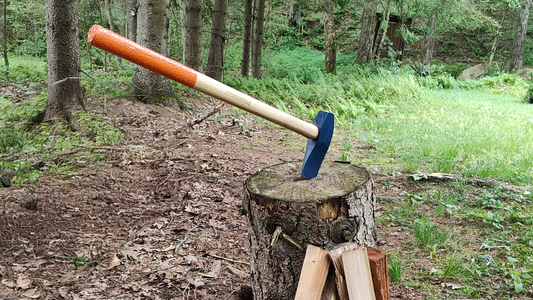Hammers Through Time
The earliest hammers that have been found were stones attached to sticks via strips of leather and animal sinew. When a “hammer stone” was used to splinter more brittle stones like flint, into cutting tools. After they began to perfect their technique, they formed and shaped axes, knives, then more intricate arrow heads and spear heads. Still, later they used the formed shards into carving tools for wood, to break open animal skulls, bones, shells, and even make jewelry.
It was only really in the Bronze Age (approx. 3300 BC) that we saw the creation of the hammer styles which we see today and often take for granted. There is historical evidence to suggest that bronze/copper hammerheads were used as far back as 3,000 BC in an area of the world we now know as Iraq. In reality, this may have been the first major breakthrough in the design of the modern-day hammer head allowing for much tougher materials to be used in construction.
Hammer Safety
Hammers are a common source of potential safety risk. If your work requires the use of a hammer, be sure to follow these safety recommendations to avoid injury.
- When using a hammer, safety eyewear should always be used. – When nails are pounded into wooden products or surfaces, shrapnel (small, thin wooden splinters) are formed. Splinters may crash into your eyes when they fall to the ground. Safety goggles can help to keep splinters and other debris out of your eyes.
- Gloves are recommended. – When using a hammer, you should wear gloves as well as safety goggles. The majority of hammer-related injuries affect the eyes or the hands. Wearing gloves will not protect your hands from potential damage. When hammering, they will, however, reduce the chance of serious hand injuries.
- Examine the hammer – Inspect the head of the hammer before using it to make sure it’s not loose.
Design with Purpose
While there are many different variations on the traditional hammer, they all have two main components which are the head and the handle. The shape, size, and material used for each of these elements will vary depending upon their use. The force created by a hammer blow is directly proportional to the weight of the hammerhead, the length of the hammer handle, the force with which it is driven down (or up), and good old-fashioned gravity. Hammers overall are so popular and versatile that there’s even a Hammer Museum in Haines, Alaska, dedicated to showcasing the hammer timeline and a variety of contemporary and historical designs.





